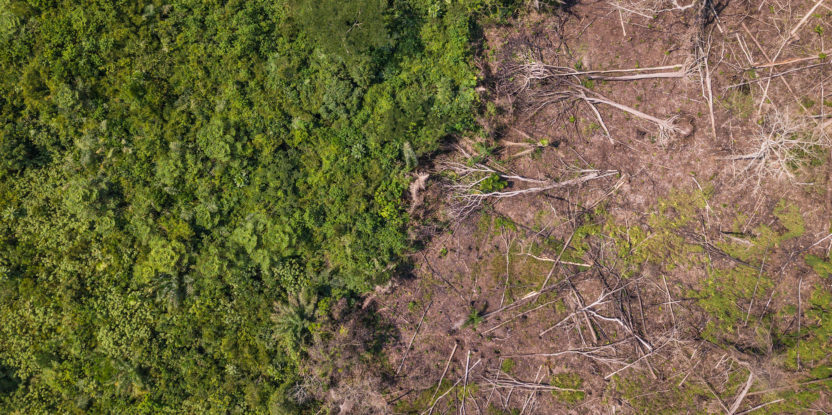
When choosing how to reduce deforestation, decision makers face a wide set of policy options: do we increase enforcement and sanctioning of illegal activities, or do we increase the benefits of conservation activities by introducing payments for ecosystem services? Should we target consumers to reduce the demand for products related to deforestation, or target actors in the supply chain and increase their transparency standards? Or should we increase tenure security so that land users can enforce their rights?
It is very likely that a common answer to all these questions is: “it depends on the context!”. Decision makers could then look at previous or existing experiences of policy implementation and their impacts to determine which policy is likely to provide the best outcome in a given context. Unfortunately, the evidence base of which policy works, and where, is scattered and even missing for some policies. Moreover, the relationship between the characteristics of various contexts and the effectiveness of policies is reportedly very complex.
To increase our capacity to formulate sound recommendations about which policies perform best at reducing deforestation in which context, we proposed in a recently published working paper to classify forest policies and measures into broad types, depending on their differences and similarities in the way they aim to reduce deforestation (that is, their theory of change).
In order to build our policy typology, we first identified a list of policies and measures aimed at changing the behaviour of forest-related actors, thereby reducing deforestation. So far, we have identified a list of 35 different policies and measures based on a review of the scientific literature and policy documents of four important tropical forest countries: Brazil, the Democratic Republic of the Congo (DRC), Indonesia and Peru. This list is not exhaustive and will evolve as new forest policies and measures are identified.
We classified each policy according to three attributes. The first is the main type of actor targeted by the policy; these can include the landowners and users of the commodities and products related to deforestation, the supply chain actors, the governments, or the finance actors related to deforestation. The second attribute is the main motivations that the policy triggers; we draw from psychological and economic theory to identify four different motivations behind behavioural change, such as increasing access to external rewards or satisfying the needs to belong to social groups or to feel competent in performing a specific action. The third attribute is the main deforestation driver that the policy addresses; for example, some policies, such as payments for ecosystem services (PES), target the direct drivers of deforestation and increase the benefits of activities that contribute to reducing deforestation and forest degradation. Other policies aim to address the underlying drivers of deforestation, such as the ones addressing weak governance, tenure insecurity, or inadequate levels of development.
The classification of our pool of 35 policies and measures according to the main targeted actor, psychological motivation and targeted deforestation driver resulted in the identification of 10 types of policies. These 10 encompass not only the traditional solutions aimed at changing producers’ behaviour, such as command-and-control policies and economic incentives, but also demand-side policies and policies triggering psychological mechanisms such as social belongingness:
- Four types of policies and measures target land users or agricultural producers in forest-rich countries and aim to trigger the whole range of motivations identified. Economic incentives such as PES create external rewards while command-and-control measures such as protected areas are based on instigating fear through the prospect of punishment. Other policies strengthen the capacities of land users to manage forests sustainably by, for example, granting use rights.
- Two types of policies and measures target government actors or multiple stakeholders that include government actors and aim to improve the governance of tropical forested countries. It includes, for example, multistakeholder platforms and decentralization policies.
- Two types of policies and measures aim to reduce the demand for forest-related commodities and products. They target end-consumers or intermediate supply chain actors, such as multinational companies buying forest-risk commodities like palm oil, and include awareness campaigns or public procurement policies.
- The two last types of policies and measures have in common the fact that they can be used to influence the behaviour of a broad spectrum of forest-related actors, and target external motivations (i.e., rewards or punishment). In particular, they include subsidies and taxes.
Our policy typology is part of broader ongoing research about deforestation diagnostics under the Global Comparative Study on REDD+. Deforestation diagnostics aims to contribute to the identification of links between context characteristics and forest policy and measure effectiveness that apply across various settings. We hope the proposed policy typology can work as a starting point for future comparisons of policy effectiveness across cases and contexts.
___
For more information, please contact Julia Naime (julia.del.carmen.naime.sanchez.henkel@nmbu.no) or Colas Chervier (c.chervier@cifor-icraf.org).
___
This research is part of CIFOR’s Global Comparative Study on REDD+ (www.cifor-icraf.org/gcs). The funding partners that have supported this research include the Norwegian Agency for Development Cooperation, the International Climate Initiative (IKI) of the German Federal Ministry for the Environment, Nature Conservation, and Nuclear Safety, and the CGIAR Research Program on Forests, Trees and Agroforestry (CRP-FTA) with financial support from the CGIAR Fund Donors.
We want you to share Forests News content, which is licensed under Creative Commons Attribution-NonCommercial-ShareAlike 4.0 International (CC BY-NC-SA 4.0). This means you are free to redistribute our material for non-commercial purposes. All we ask is that you give Forests News appropriate credit and link to the original Forests News content, indicate if changes were made, and distribute your contributions under the same Creative Commons license. You must notify Forests News if you repost, reprint or reuse our materials by contacting forestsnews@cifor-icraf.org.